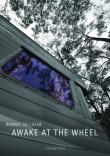AustLit
Latest Issues
AbstractHistoryArchive Description
'From the backroads of the Australian outback to the icy streets of Paris winter, these dynamic poems traverse geographies, languages and techniques. Marked by a subtle probing of the metaphysical layerings that underpin human experience, this exploration returns again and again to the concrete details of everyday happenings. Drawing equally on moments of joy and loss, shifting from comic and bawdy bohemianism to introspective sensory envelopment, Awake at the Wheel evokes a dynamic and fragile world. This fragility is an insistent theme, both in terms of human mortality and ecological crisis. These poems travel across a beautiful earth, through mental and spiritual zones bleached by consumer capitalism, and through country ravaged by mining, passing amongst the ghosts of those who have gone before, the spirits of loved ones, and of cultural and literary inheritance. This is a collection of playful, innovative and imaginative poems, driven by a refined and attentive musicality, brimming with possibility and surprise.' (Publication summary)
Notes
-
Dedication:
For my father Nik
whose memory for verse
exceeds all else but wine.
Publication Details of Only Known VersionEarliest 2 Known Versions of
Works about this Work
-
Review Short : Berndt Sellheim’s Awake at the Wheel
2017
single work
review
essay
— Appears in: Cordite Poetry Review , 1 February no. 57 2017; 'In Awake at the Wheel, Berndt Sellheim’s debut collection of poems, Australia is imagined in gothic terms, from the eerie and persistent presence of the ‘bushland’s dark parchment’ to the bones and ghosts which haunt an endless landscape. An homage to country, there is little innocence embedded in these poems of insides and outsides, which speak not only to a transforming sense of self but also to an environment that ceaselessly, and often uneasily, shifts. It is a thematic captured most vividly in the attention to diurnal rhythms – the ‘dying light’, the ‘wash and ebb’ of the sea – which evolve poignantly in relation to the cycles of life and death. In Sellheim’s work, such categories are rarely exclusive, but invested in notions of everyday metamorphosis, such as in ‘The Divine Art of Compost’, in which a ‘lush thermal sweat’ creates a ‘sumptuous / chemistry / of season and decay’. These transformations are ‘all organic matter’, yet there is nonetheless an abiding disquiet, as noted in the suggestion that while there are ‘bodies which build and inhabit’, there are also ‘bodies which lie beneath’, a reminder of how the Australian gothic is interchangeable with the post-colonial.' (Introduction)
-
Review Short : Berndt Sellheim’s Awake at the Wheel
2017
single work
review
essay
— Appears in: Cordite Poetry Review , 1 February no. 57 2017; 'In Awake at the Wheel, Berndt Sellheim’s debut collection of poems, Australia is imagined in gothic terms, from the eerie and persistent presence of the ‘bushland’s dark parchment’ to the bones and ghosts which haunt an endless landscape. An homage to country, there is little innocence embedded in these poems of insides and outsides, which speak not only to a transforming sense of self but also to an environment that ceaselessly, and often uneasily, shifts. It is a thematic captured most vividly in the attention to diurnal rhythms – the ‘dying light’, the ‘wash and ebb’ of the sea – which evolve poignantly in relation to the cycles of life and death. In Sellheim’s work, such categories are rarely exclusive, but invested in notions of everyday metamorphosis, such as in ‘The Divine Art of Compost’, in which a ‘lush thermal sweat’ creates a ‘sumptuous / chemistry / of season and decay’. These transformations are ‘all organic matter’, yet there is nonetheless an abiding disquiet, as noted in the suggestion that while there are ‘bodies which build and inhabit’, there are also ‘bodies which lie beneath’, a reminder of how the Australian gothic is interchangeable with the post-colonial.' (Introduction)
Awards
- 2016 winner Anne Elder Award




